Everythiing was working fine
My laptop has SQL Server installed
I formatted my laptop
Installed SQL Server (latest version)
then Changed my computer name
Old name was : DESKTOP-EP40R17
New Name is : DELLG3
Now trying to add new user to access databases as i used to do before formatting
I added new user called demo
And setup the user as I did before
but when I try to add new computer name to Securables
I get this error
How to fix that and get a new user working?
I tried deleting the user and create a new user still getting no luck accessing the server with new user id
Edit
I removed the old server name from SQL Server and added new server name using this script
SELECT @@SERVERNAME
sp_dropserver 'DESKTOP-EP40R17'
sp_addserver 'DELLG3', 'local'
Problem still occurs
I cannot login using the new user ID
Here how it looks like now
Here is the error text
===================================
Cannot connect to DELLG3.
===================================
Login failed for user 'demo'. (.Net SqlClient Data Provider)
------------------------------
For help, click: https://learn.microsoft.com/sql/relational-databases/errors-events/mssqlserver-18456-database-engine-error
------------------------------
Server Name: DELLG3
Error Number: 18456
Severity: 14
State: 1
Line Number: 65536
------------------------------
Program Location:
at System.Data.SqlClient.SqlInternalConnectionTds..ctor(DbConnectionPoolIdentity identity, SqlConnectionString connectionOptions, SqlCredential credential, Object providerInfo, String newPassword, SecureString newSecurePassword, Boolean redirectedUserInstance, SqlConnectionString userConnectionOptions, SessionData reconnectSessionData, DbConnectionPool pool, String accessToken, Boolean applyTransientFaultHandling, SqlAuthenticationProviderManager sqlAuthProviderManager)
at System.Data.SqlClient.SqlConnectionFactory.CreateConnection(DbConnectionOptions options, DbConnectionPoolKey poolKey, Object poolGroupProviderInfo, DbConnectionPool pool, DbConnection owningConnection, DbConnectionOptions userOptions)
at System.Data.ProviderBase.DbConnectionFactory.CreateNonPooledConnection(DbConnection owningConnection, DbConnectionPoolGroup poolGroup, DbConnectionOptions userOptions)
at System.Data.ProviderBase.DbConnectionFactory.TryGetConnection(DbConnection owningConnection, TaskCompletionSource`1 retry, DbConnectionOptions userOptions, DbConnectionInternal oldConnection, DbConnectionInternal& connection)
at System.Data.ProviderBase.DbConnectionInternal.TryOpenConnectionInternal(DbConnection outerConnection, DbConnectionFactory connectionFactory, TaskCompletionSource`1 retry, DbConnectionOptions userOptions)
at System.Data.ProviderBase.DbConnectionClosed.TryOpenConnection(DbConnection outerConnection, DbConnectionFactory connectionFactory, TaskCompletionSource`1 retry, DbConnectionOptions userOptions)
at System.Data.SqlClient.SqlConnection.TryOpenInner(TaskCompletionSource`1 retry)
at System.Data.SqlClient.SqlConnection.TryOpen(TaskCompletionSource`1 retry)
at System.Data.SqlClient.SqlConnection.Open()
at Microsoft.SqlServer.Management.SqlStudio.Explorer.ObjectExplorerService.ValidateConnection(UIConnectionInfo ci, IServerType server)
at Microsoft.SqlServer.Management.UI.ConnectionDlg.Connector.ConnectionThreadUser()










